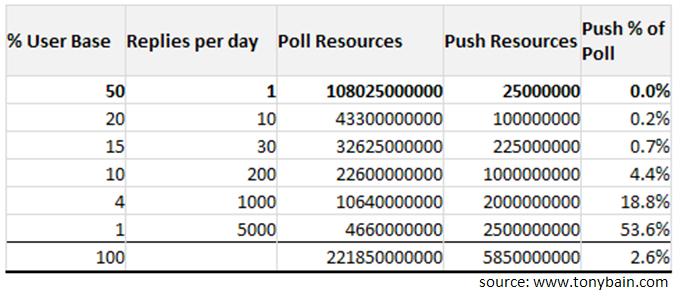 The real-time web is shaping up to be the next online revolution, and as we saw during our RealTime CrunchUp earlier this month, it’s already begun. But there are still some things that are holding us back — for one, many services still aren’t actually real time, they’re just something close to it. That may work well enough for sites like Facebook, but as we begin to see more innovation on this front, there’s likely going to be much more demand for technology that is truly real time. Groovy Corp, a database software marker partially owned by Intel, thinks it has the answer: a relational data management system called the SQL Switch, which it says will make true real-time both affordable and feasible.
The real-time web is shaping up to be the next online revolution, and as we saw during our RealTime CrunchUp earlier this month, it’s already begun. But there are still some things that are holding us back — for one, many services still aren’t actually real time, they’re just something close to it. That may work well enough for sites like Facebook, but as we begin to see more innovation on this front, there’s likely going to be much more demand for technology that is truly real time. Groovy Corp, a database software marker partially owned by Intel, thinks it has the answer: a relational data management system called the SQL Switch, which it says will make true real-time both affordable and feasible.
Groovy CEO Joe Ward stresses how important it is to make the distinction about what real-time really means, pointing out the fact that the vast majority of “real-time” content on the web really isn’t holding true to the definition of the term. Instead, he says most services are “near-time”, with delays that can range from a few seconds to a few minutes, which isn’t going to cut it as more and more of these services become integral to the way we use the web.
Ward also says that the key difference between near-time and real-time lies not only in the time lag seen with these services — after all, you can still get updates within a few seconds using the current methods — but in the way the current techniques interact with the server. Current methods of ‘real-time’ typically rely on frequent polling, where your browser continuously pings a server for any updates. This, Ward says, results in very high sever loads, with costs growing exponentially as the number of users increases.
Conversely, Groovy’s technique in the SQL Switch is akin to a ‘Push’ technology, where the server pushes the data without the need for the client to continuously poll for new information. This, in turn, leads to significant savings in server load by reducing the footprint on the application service fourfold, which also leads to a 20% saving in overall costs (you can see an estimate of the processing costs for the competing technologies below). The new software runs on special Intel boxes, with performance that the company says matches 100 standard SQL servers. For more, you can check out the full product spec sheet here.

Groovy offers a number of demos of the technology that are currently completing some final benchmarking, so you can’t try them out just yet, but they will be available here by the end of the week. Among them is a real-time Twitter client, which accesses Twitter’s API 20,000 times an hour.
Of course, it’s hard to tell just how powerful this technology will be until it’s actually released. Fortunately, we won’t have to wait long: Groovy will be making its debut, with benchmarked stats, at next week’s AlwaysOn conference.
Disclosure: Groovy Corp was a sponsor for the TechCrunch Real Time CrunchUp.